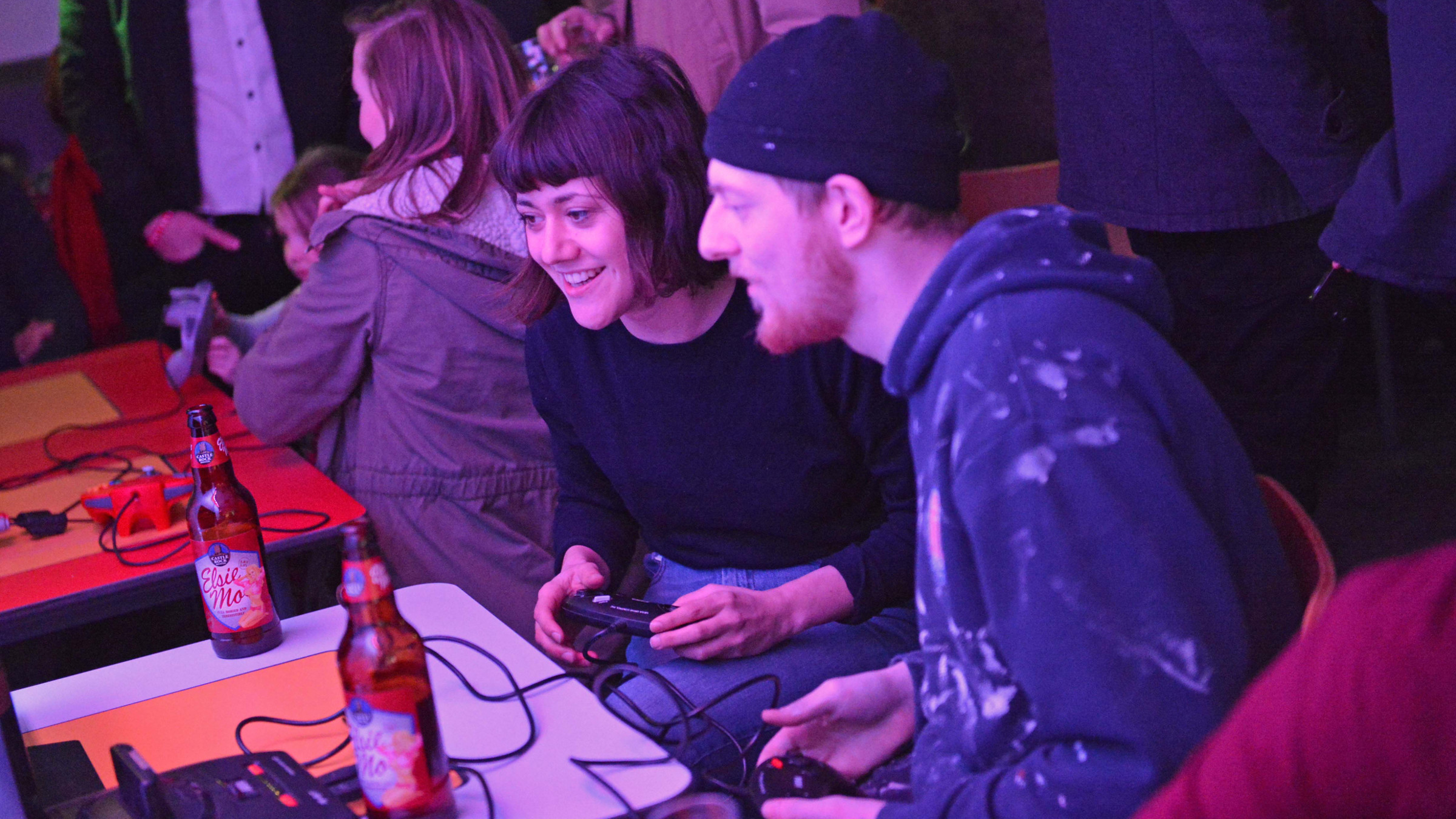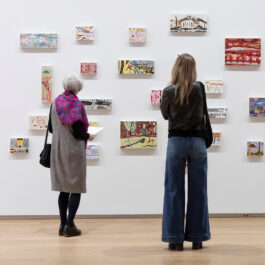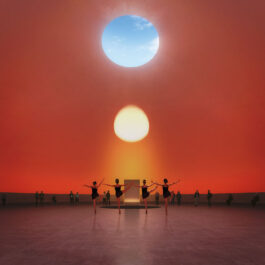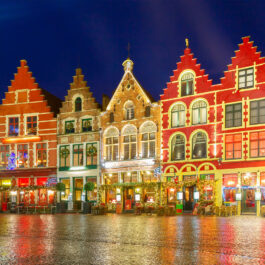The world of video games still arouses mixed emotions in people, and prejudices abound. For non-gamers it’s the preserve of youth culture or a niche hobby at best. More negative associations are of kids (and big kids) lost in a virtual universe – among countless other clichés. But just how marginal can a field really be that has now attracted generations of followers for more than 40 years?
As time has passed, and with it an endless proliferation of consoles and genres of games, video games are slowly but steadily being recognised as an important and influential presence in our popular culture. Increasingly, young and old are finding common ground and discovering ways to share their passion for games.
A retro-gaming movement has even emerged over the past decade – a natural counterpoint to the breathtakingly realistic modern games now being created. If arcade machines were left behind in the 1980s and 1990s with gamers preferring home consoles and computers, today they are returning and are more eye-catching than ever, showcasing Pac-Man and your favourite invaders from space. A case in point is the National Videogame Arcade (NVA) in the UK, which opened in late March this year. This is the world’s first cultural centre for gaming, featuring numerous restored vintage arcade machines over its five floors. The project was conceived by the brains behind the internationally renowned GameCity Festival, and has attracted huge attention since its opening. We spoke to Iain Simons (pictured below), co-founder of the NVA and director of GameCity, to discover his views on the past, present and future of video games.
What inspired you to create the world’s first permanent cultural centre for video games?
Well, for the last 10 years we’ve been running GameCity, which has attempted to engage a broader audience in video games than just the usual crowd. As much as we love the festival and will continue to do so, we were starting to do the kinds of projects that happen for longer than 8 days a year. With a growing set of educational activities and a more regular audience we were building things like touring shows, and it become clear that we needed a home if we were going to realise the things we really wanted to do. It‘s only really with that kind of permanence that we can really experiment…
How do you curate the games featured at the centre?
We try and provide a constantly changing selection of games, ranging from classics that you know and love to brand new works made specially for the building. We’re trying to make the building itself a playable platform, commissioning new games for different parts of the place. For instance, someone might make a game for the beer garden lights, or the stairwell, or the front windows. We want the NVA to be a place where games are made, as well as played!
In addition to that, we’re also going to produce a special exhibition 4 times a year looking at a particular aspect of video games. Our first one is called Jump!, which looks at jumping.
From blockbusters to indie games, GameCity gives game developers the opportunity to showcase their work. How do you spot the up-and-coming talents?
We keep our ear to the ground, and to Twitter [smiling].
Generally you find that people who make interesting games also know the other interesting games being made, so we talk to developers as much as we can. Hopefully they know that GameCity is a place where they can showcase their work, finished or not.
What is it, in your opinion, that makes video games so addictive?
I‘m not sure they‘re necessarily addictive, as addictions usually subtract from life, but they can be very compelling. I think video games give us a safe space in which to rehearse solutions to problems, explore creative ideas and, of course, sometimes to compete against others or ourselves. Those are all very compelling things.
What game(s) played a significant role in your childhood?
I loved, and love, the games made in the UK in the early 1980s. They had a real sense of character, of being made by a person that has been lost for a few decades but is thankfully coming back now. In particular, I love the work of Jeff Minter, who ran (and runs!) a company called Llamasoft that makes the most amazing abstract shoot-em-ups. Jeff is still making brilliant games and I recommend everyone should play them!
If you could only play one video game from your collection for the rest of your life, which one would it be?
Spheres of Chaos. Obscure, but true.
Video games give us a safe space in which to rehearse solutions to problems, explore creative ideas.
What skills can be learned from playing video games?
That very much depends on the videogame being played of course, but I think one of the most interesting opportunities that games are offering people at the moment is the chance to be creative. To imagine and build spaces which have never existed before and then to explore them with your friends. That’s an incredibly powerful possibility.
Some compare the social history of video gaming to that of hip hop – a niche movement that eventually became mainstream. Do you agree?
It’s odd and it’s interesting. Video games are at once incredibly pervasive and mainstream, yet also hugely niche and difficult to access. The thing about video games is, they’re not one thing. That’s where I think the comparison to hip hop is a little unfair. Gaming culture is evolving into discreet areas of culture that enhance the lives of lots of different kinds of people with widely varied interests. It’s still finding its feet, and it’s still finding and creating new audiences all the time.
The most exciting thing about video games at the moment, in terms of their potential as a cultural voice, is the diversity of voices now making games. Rather than being a form that has been dominated by a certain demographic of maker, we‘re now in a position where different kinds of people are creating them. That’s what’s most exciting to me, seeing what these new voices are going to make. New games that can express different cultural interests in new ways. I think that‘s where the hip hop analogy will be meaningful. As hip hop is a subset of ‘music’, so someone will create a subset of ‘video games’ that speaks to people in new ways.
One might say that video games are a democratising force, uniting people of different ages and backgrounds around a common passion. As a cultural centre, do you feel like you‘re also an evangelist for greater awareness?
The bottom line for us is that video games are interesting things. We want people to be interested in being interested. We’d like to bring gaming out of the darkness and help people explore and understand it. Building literacy, understanding and, as a result of that, having more fun!
Would you say gaming is becoming more of a family thing
There‘s definitely a growing place for video games at the heart of family life. We find a large number of families visit us, and increasingly parents are just as engaged as the kids.
In general, have video games replaced board games?
Definitely not! If anything, board games are having a renaissance, from what I can see. We find that they co-exist really well together, and a lot of game developers spend a lot of time playing and thinking about how board games are designed. You’ll certainly find them in our café to play!
What do you think is the future of gaming? Will devices like Kinect and, more recently, Oculus be on the rise? Or do you think there will be a retro-movement, a return to simpler classic game formats?
Technological advances aside, I think the future of gaming is going to be a surprise – and from a place we don’t expect it. I think someone will make a game that speaks to an audience in a different way and becomes a key part of a broader culture. We’re getting close…
Interview by Anissa Tijani














Sorry, the comment form is closed at this time.